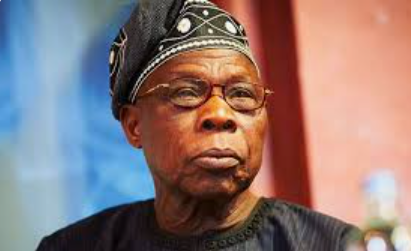Nigeria has made a landmark appearance at the 2025 London Design Biennale with its first-ever government-backed national pavilion, as Yinka Olatunbosun reports.
Held at Somerset House, the London Design Biennale is a global celebration of design collaboration, featuring immersive installations, soundscapes, paintings, and sculptures that transport visitors into realms of creative innovation. This year’s edition, themed “Surface Reflections,” convenes over 35 international pavilions, each offering a distinct perspective on the role of design in shaping culture and identity.
In its fifth edition, the Biennale welcomed Nigeria’s inaugural participation through its national pavilion, “Hopes and Impediments.” Drawing inspiration from the ancient iron-smelting site of Lejja in Enugu State, the pavilion explores themes of memory, identity, and innovation through a mix of ethnographic research, digital storytelling, and architectural intervention.
Named after Chinua Achebe’s collection of essays, Hopes and Impediments reflects on the fluidity of identity—shaped by shared histories and cultural memory. Curated by Myles Igwebuike and Itohan Barlow Ndukuba, the exhibition engages ideas around design, nation branding, and Nigeria’s cultural influence on the global stage.
According to Itohan, Nigeria’s participation marks a strategic declaration of its cultural and economic ambitions. The pavilion blends heritage, contemporary design, and digital technology to tell a cohesive story about Nigerian identity and possibility.
She notes that African design has long been underrepresented on global platforms, and the pavilion seeks to shift that narrative. By elevating Nigerian creativity as a powerful contributor to global design frameworks, it repositions the country as a vibrant hub of innovation. Previous representations of Nigeria at international exhibitions have often lacked depth—but this edition, backed by the Federal Ministry of Arts, Culture, Tourism and the Creative Economy, reflects a refreshed approach focused on excellence, strategy, and accountability.
“This isn’t just about visibility,” Itohan explains. “It’s about setting new standards and proving that Nigerian creativity can compete on any global platform. We want our execution to speak to the highest level of excellence.”
The London Design Biennale draws over 200,000 visitors annually—including museum directors, academics, creatives, policymakers, and media leaders. For Nigeria’s emerging design talent, it offers a rare opportunity to present their work on an international stage. The Nigerian Pavilion aims to leverage this exposure not only to promote homegrown innovation but also to position the country as a cultural and tourism destination.
At the heart of the pavilion is a celebration of collective creation, a defining element of Nigerian identity. Through interactive digital installations, the exhibition uses technology to share an underexplored African story, blending ancient wisdom with futuristic vision.
The pavilion’s journey will continue beyond London, with plans to tour two additional international venues across Europe and the Middle East before returning to Nigeria. Itohan describes this touring model as both a cultural and economic imperative. “It’s about building long-term partnerships and creating global opportunities for our designers. In each city, we’ll host networking events and panel discussions to showcase Nigeria’s creative potential in design and craftsmanship.”
Curating the Nigerian Pavilion was not without its challenges. Itohan acknowledges that African design is often misrepresented or oversimplified. “Design is not just art—it’s expansive,” she says. The team had to overcome funding gaps and structural limitations, but collaboration with institutions that understand the value of design helped bring the vision to life.
From a curatorial lens, Myles Igwebuike emphasises the importance of collaboration across sectors—design, tech, and education. By partnering with universities, creative hubs, and agencies, the curators have built a platform that highlights the depth and diversity of Nigerian talent. “This pavilion is more than an exhibition—it’s a movement,” Myles says, “a call to action for the next generation of Nigerian designers.”
Beyond the cultural value, the pavilion is also envisioned as an economic catalyst—encouraging youth participation, fostering job creation, and driving international interest in Nigerian design. As the creative industry is projected to contribute $100 billion to Nigeria’s GDP by 2030, initiatives like this are vital in unlocking the sector’s potential.
Itohan describes the pavilion as a convergence point for the entire creative ecosystem. “‘Hopes and Impediments’ brings together architecture, fashion, digital design, and traditional craft. It tells a unified story about who we are—and who we aspire to be.”
At its core, the pavilion draws from Lejja—a southeastern Nigerian site with over 2,000 years of metallurgical history. This ancient iron-working community represents both brilliance and invisibility: a place of historic technological advancement that has remained largely unrecognised on the global stage.
Myles explains that while Lejja’s technologies may no longer be in use, its ecological wisdom and social structures persist, offering insight into indigenous knowledge systems that shape governance, gender roles, and community resilience. The pavilion brings these hidden narratives to life through sound, materiality, and digital reconstructions—creating a space where ancestral memory meets futuristic design.
Supported by the Ministry and sponsored by Leadway Group, the Nigerian Pavilion is a proud projection of African heritage onto the global stage. It functions both as a mirror and a map—reflecting Nigeria’s deep past and charting a bold path forward for its design future.
Ultimately, the pavilion affirms that the future of African design lies in reclaiming and reinterpreting its past. By amplifying overlooked narratives and showcasing world-class execution, the Nigerian Pavilion signals a transformative moment: a redefinition of how the world sees, engages with, and celebrates Nigerian creativity.


















Leave a comment